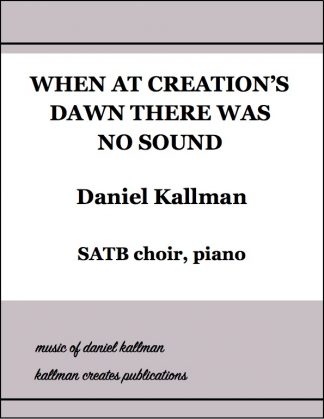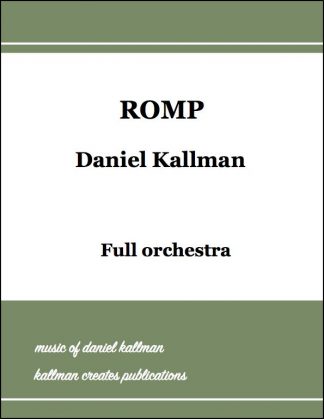Description
![]() Kallman Creates Publications
Kallman Creates Publications
An urgent call to respond to the challenges of climate change. For full orchestra.
Duration: 14’00”
Gaia: Desecration, Lamentation and Awakening was commissioned by the St. Olaf College Orchestra (Northfield, Minnesota) and premiered on their West Coast tour in the fall of 2015.
Listen
(St. Olaf Orchestra, Northfield, MN, Steven Amundson conducting)
View
Composer’s Program Notes
Most artists would agree that one of the primary purposes of the creative act is to summon an emotional response from the audience. That was certainly my intent in composing this work.
Data regarding climate change repeatedly confirms that, due to our use of fossil fuels, temperatures and sea levels are rising, precipitation patterns are becoming more erratic and destructive, wildfires are larger and more out-of-control, glaciers are disappearing and permafrost is melting. Yet even as most of us believe the science, our response is often clinical and intellectual.
Until we find an avenue for an emotional response – until we “feel” the tragedy as it unfolds before us – we may not find the personal motivation so crucial to solving the problem. It is my hope that this composition will serve that purpose for many who hear it.
As the title implies, the single movement work is organized in three distinct sections illustrating past, present and future scenarios.
It opens with a driving outburst representing the relentless assault which has been perpetrated against nature, and warning us of the urgency of the situation in which we find ourselves.
Following an extended, erratic build to a chaotic frenzy, the activity gradually softens and settles to music of reflection and remorse for the losses we have already witnessed and for those to come. This lament is the crux of the composition, I believe, where the music seems to ask, “How could we let this happen?” It allows us to ponder what our response should be from this day forward.
A music of hope hesitantly emerges, eventually struggling upward while transforming to strains of measured optimism. This is a call to confident, compassionate action, the awakening of our individual and collective consciousness as we embrace the challenge before us.
The work ends with a stark reminder of the seriousness of our present situation and the uncertainty of the future.




